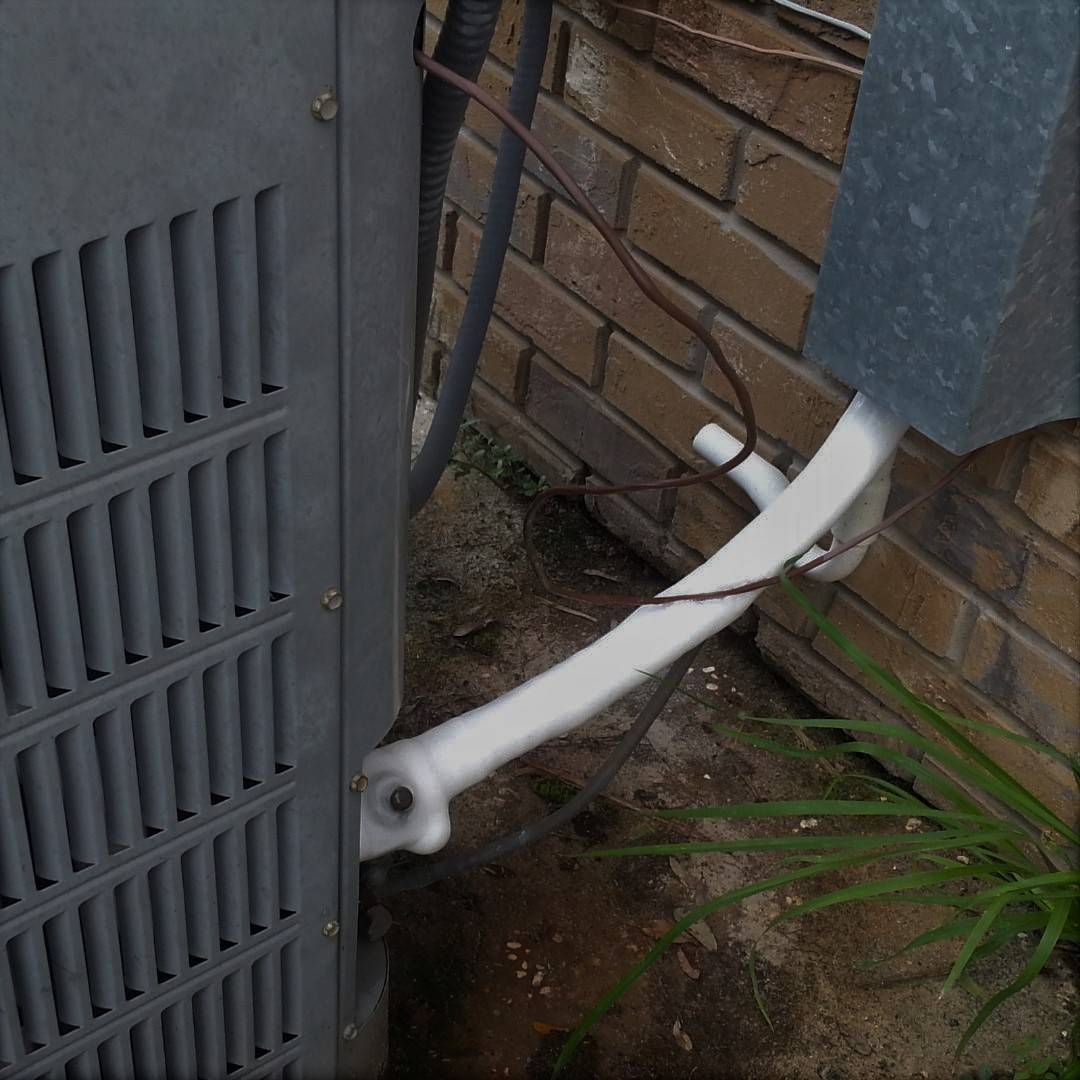FROZEN AC LINE
This week on Tech Tips we’re talking about Frozen AC lines and what can cause them.
A frozen AC line isn’t always just one simple thing, sometimes it can be a variety of things that can cause your AC line to freeze. One of these problems is poor airflow over your evaporator coil, which can be directly caused by not changing your furnace filter. Another major reason is that the same coil is dirty and unable to properly cool, both of these can be caused by your furnace filter working improperly or not being replaced enough.
Another big reason for this is your system may be low on refrigerant which could be caused by a small leak in your AC system. This can lead to higher energy costs and more wear and tear on your system over time.
Another issue could be that your air return vents are blocked, this too can cause poor airflow over your evaporator coil and cause it to not properly disperse heat and cool your home. It’s always important to make sure your vents and returns are clear of any obstructions.
With all that being said, I’m sure there are a few DIYers out there wondering how to thaw a frozen AC line and unfortunately there isn’t a good answer. Turning the system off for a period of time will allow the coil and line to thaw, however it won’t fix the underlying problem.
The reality is that you will need a licensed HVAC technician, much like the one’s here at Superior Heating Cooling Plumbing to come out and assess the situation and let you know what the problem is. This can prevent further damage to your system and even keep you from needing to replace your equipment prematurely.
Thank you for reading Tech Tips and if you have a frozen AC line, make sure to call us here at Superior Heating Cooling Plumbing and ask to set up a service call. We will see you next week for a new tech tip.
Poor Airflow over the Evaporator Coil
When evaporator coils on an air conditioning unit becomes too cold, the ac unit pipes freeze. This is the primary reason behind frozen AC lines. The evaporator coils inside an air conditioning unit are filled with refrigerant. A properly functioning AC system extracts the warm air from inside your home and sends it through your air conditioner where the evaporator coils cool the warm air, then redistribute it back into the home.
If the airflow leading into the air conditioner is obstructed, it can cause the evaporator coils to become too cold, therefore causing the copper lines attached to your condenser to freeze. Here are some common factors as to why an air conditioning system can develop poor airflow:
Dirty Air Filter
You should be changing your air filter on a monthly basis. If it becomes dirty and clogged, it will prevent air from flowing through the unit and allow the coils to freeze.
Supply Vents are Closed
Some homeowners assume that closing supply vents in rooms that aren’t being used will put less stress on their unit and lower their utility bills. However, this practice can limit air flow and lead air conditioners to freeze.
Return Vents are Blocked
Vents are also used to suck air into the unit and play an important role in proper air flow These can also become blocked and cause the unit to malfunction.
Broken Fan or Blower
A broken fan won’t be able to send enough air over the evaporator coil. The fan is responsible for not only pulling warm air into the system but also pushing cold air into the home through the ductwork and vents. When something goes wrong with the blower motor or fan, your AC system will stop working properly, it will become difficult to cool your home and your AC line could freeze.
Dirty Evaporator Coil
Just as dirt can block the air filter and cause problems, a dirty evaporator coil will also prevent proper air flow. Regular maintenance will help you avoid this problem.
When it comes to troubleshooting HVAC systems, your first step should always be to check and change the air filter. This simple task may be enough to fix the problem. From there, be sure to make sure all the vents are completely open and unobstructed.

Low Refrigerant Levels
Low refrigerant levels are typically caused by a leak in the system and can also lead to freezing. This problem may also cause higher energy bills, hissing sounds, and an air conditioner that is blowing warm air. A professional will be able to empty the remaining refrigerant, locate and repair the leak and restore your refrigerant levels to normal for optimal performance.
Common Symptoms of Low Refrigerant Levels that can Lead to an Air Conditioner Line Becoming Frozen
- The AC unit is constantly running despite not cooling your home
- Hissing or buzzing sounds coming from the outside air conditioning condenser
- Increased energy bills during peak cooling seasons
Thawing Your AC Line
DIYers are often looking for ways to thaw the AC unit and get the cool air flowing again. Simply turning off the thermostat and turning the fan to the “ON” position for a few hours will allow your unit to thaw out, but this won’t address the underlying problem and you may find that your lines quickly become frozen again. In addition, the thawing process can produce a lot of water. If this water isn’t properly directed and handled, it could end up causing serious water damage to your home.
While it is tempting to try and fix your AC unit yourself there is a risk that you could trigger other problems and still be left with a hot home. Your best bet is to call a professional who can quickly assess your situation, recommend a course of action and make any necessary repairs. Paying an experienced technician now can help you avoid more costly air conditioning repair and utility bills down the road.
Checking all these furnace components on an annual basis will identify any problems early on and make sure that your furnace fires up without a problem on the first cold day of the year. Without regular maintenance, you may find yourself suffering through the cold till an HVAC repair technician can visit your home.
Schedule Your Air Conditioning Repair Today
If you suspect that you are experiencing any of the common AC problems above, please don’t hesitate to give us a call. We can have a certified service technician at your home as quickly as possible to fix any issues behind your AC not cooling properly. To set up your air conditioning repair today, call our office at (314) 209-7500 or fill out the online form below.
To set up your home furnace repair today, call our office or fill out the online form below.
"*" indicates required fields





